North of Bend, Oregon. Our public land. Free. Quiet. Last month, heading home from the Northwest Overland Rally.
James Langan
Copyright James Langan/RoadTraveler. All Rights Reserved

Trucks, Tech, Reviews, ADV Travel
A few comments and observations after a disclaimer: I’m not a Ford hater. In fact, I like Ford trucks, bought a new 1996 F-350 7.3L diesel I owned for 18 years, plus a Ford Ranger a decade earlier. This F-350 is just a convenient example for sharing some thoughts that apply to several brands and platforms.
Body-Roll (Sway) Bars
Ram does a better job with their factory body-roll bar designs on their late-model heavy-duty pickups. Ram’s rear sway-bar points aft and is angled up slightly from horizontal, making it less likely to hit things. The Ford design shown in my video looks like a rock and brush magnet, and it appears to be positioned similarly to my 1996 F-350. Surely Ford could do better on a four-wheel-drive (4WD) truck.
Wheels and Tires
Large wheels and shorter sidewall tires are not the best choice for off-highway focused four-wheel-drives. Big wheels (taller than necessary to clear the brakes) and short tire sidewalls have become extremely fashionable in recent decades, including on heavy-duty 4WD trucks. Some are supposedly setup for off-pavement use. Many are just lifted posers and rarely see more than a dirt parking lot, gravel driveway, or graded fire-road that many cars could navigate. What about those folks that do travel off-highway, particularly those with campers, are shorter sidewall tires better?
Heavy camper outfits are different animals compared to traditional 4WD pickups and utility vehicles. There is more weight overall and the center of gravity is higher. There is naturally more body-roll. Among their varied performance capabilities, tire and wheel choices can help or hurt body-roll; there is no free lunch. Improvements in one area often mean a loss in another.
Loading, Overhang, and Tail-Swing
It is worth noting that this F-350 camper outfit is setup better than many these days, particularly some flatbed pop-up campers. Specifically, it has become popular to put longbeds on a shortbed chassis, or to mount campers further aft on a flatbed in order to carry a spare tire that no longer fits in the stock location. Typically a 35-inch spare can fit under modern trucks with a little massaging, but 37s are promoted as the must have size. (To be clear, I love taller tires, when they fit and don’t compromise the balance and function of an outfit.)
Overall/gross weight is not the only thing to watch when loading trucks; it is important where and how that weight is carried. Lower and forward is better, as is limiting rear overhang, and the resulting tail-swing that comes from parts extending too far behind the rear axle.
Spring Upgrades
At recent overland-focused events I’ve paid close attention to the rear suspensions on heavy camper outfits like the F-350 in this video. This rig and others are similar to the camper outfits I have owned.
For decades the differences between so-called 3/4-ton and 1-ton (no longer accurate names) single-rear-wheel (SRW) heavy-duty diesel pickups have been few, and sometimes nonexistent, except for badges, stickers, and/or gross-vehicle-weight-ratings (GVWR). A Ford F-350 or Ram/GM 3500 is theoretically, maybe even mechanically, superior sometimes to an F-250 or 2500 series truck, however….
As capable as a modern heavy-duty pickup chassis is, I’ve yet to find one with a weighty camper setup, including pop-ups, that didn’t perform better with aftermarket rear suspension upgrades. This includes both F-250/350 and 2500/3500 trucks. Air springs are the most common choice, but there are other options. The lighter-duty 1500 and F-150 trucks are softer, and even more likely to need modifications.
This is understandable because many, if not the vast majority of pickups rarely see maximum loads. Fewer still are frequently or constantly loaded. The average truck owner won’t tolerate an excessively firm spring-rate and ride when empty. Therefore the factory suspensions on all pickups are a compromise between weight carrying and ride quality. Newer trucks are fantastic, comfortable, and versatile, but the factory springs can’t fill all needs. It’s good to realize that upgrades might be desirable, even required, if you are going to add a maximum load.
This is not intended as an argument against F-350 or 3500 (or larger) trucks. It is possible to get too big and burly a truck for the job at hand, though the opposite is much more common. There are countless examples of folks using half-ton trucks for heavy work because that is what they have! They’d be much better served with a beefier chassis.
James Langan
Copyright James Langan/RoadTraveler. All Rights Reserved
After installing TUFTRUCK front coil springs the caster and camber were still great. Toe needed adjustment. If you want your truck to drive well and your tires to last as long as possible, make sure alignment settings are optimal.
James Langan
Copyright James Langan/RoadTraveler. All Rights Reserved
Resource: TUFTRUCK
Are 20 inch wheels and tires better for handling heavy loads? Is the firmer ride on rough surfaces (both paved and not) worth the additional lateral stability? How about for all-around, dual-sport, and overland uses? I’ve never run 20 inch wheels before, preferring the proven off-highway formula of less wheel and more tire sidewall.
About a week ago I bought a used set of stock Dodge/Ram 20 inch wheels and tires, and have been driving on the worn factory tires to establish a 20 inch baseline on my heavy camper truck.
Tires and wheels at the end of this video are: Toyo C/T 35×12.50R17 on Ram forged aluminum (WFV) Power Wagon Wheels, Toyo R/T 285/75R18 on Ram Forged aluminum (WBJ) Big Horn wheels, Firestone 285/60R20 on Ram (WF3) black painted, aluminum, Black Appearance Group wheels.
Tell ‘em you saw it on RoadTraveler.net.
James Langan
Copyright James Langan/RoadTraveler. All Rights Reserved
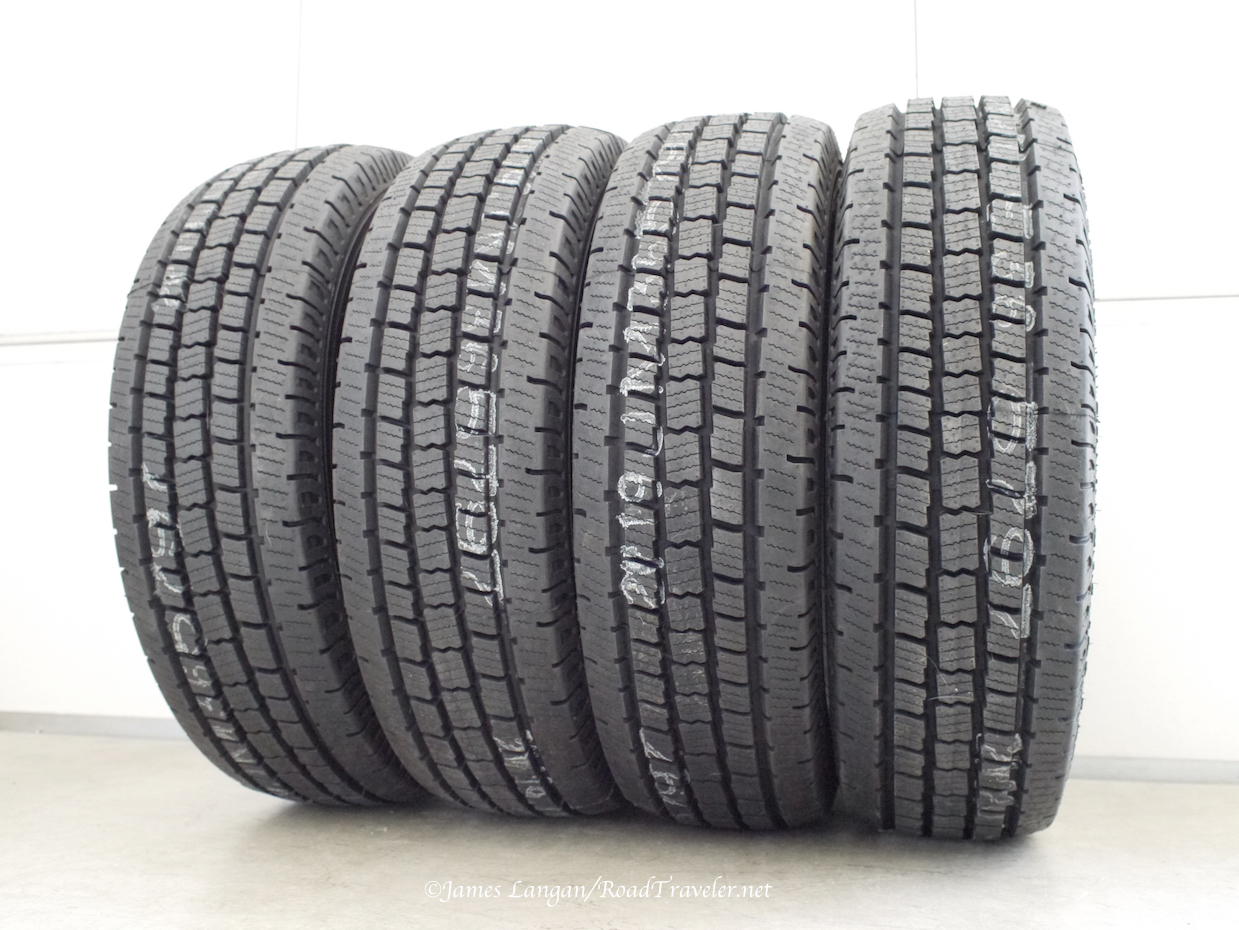
Cooper Discover HT3, LT 235/75R15 For A Vintage Travel Trailer
Automotive tire tread-separation failures are presumably at record historical lows due to the quality of modern tires, and the advent tire pressure monitoring systems (TPMS). I’m not a fan of how TPMS systems have been implemented on late-model heavy-duty Ram 2500 trucks—which require 60 psi in front and 80 psi in the rear to avoid a dash-light and flashing EVIC display—yet having psi information available while driving is a huge safety feature. The TPMS amber warning light helps alert the average, possibly inattentive driver that they have a tire that has dropped below the psi specified by a manufacturer. Like them or not, TPMS are surely here to stay, however there is no legal requirement to monitor pressure on trailers.
Trailer tires are probably ignored more than those on cars and light-trucks, and that’s saying something because many drivers give their automotive tires zero attention or maintenance until there is an obvious problem. I can only offer anecdotal evidence, but I observe far more trailers on highway shoulders with obvious rubber failures than tow-vehicles. A quick search for factual data about these trailer failures didn’t produce scientific charts I could quote, though there were plenty of links to articles and posts about trailer tire failures and how to avoid them. There was a common thread among them, which helps corroborate my experience and traditional advice: buy enough tire and don’t exceed the rated capacity.
Many trailers are used infrequently, whether RVs, utility trailers, or seasonal boat trailers, and it appears many owners fail to ensure tires are appropriately inflated and ready to travel. If pressures are not checked and adjusted to proper levels before a trip, particularly during the hotter months, tires can be easily overloaded; this will cause overheating, which can lead to separation failures. Trailer tires are also often left to rot in the sun, which contributes to aging before they see many miles.
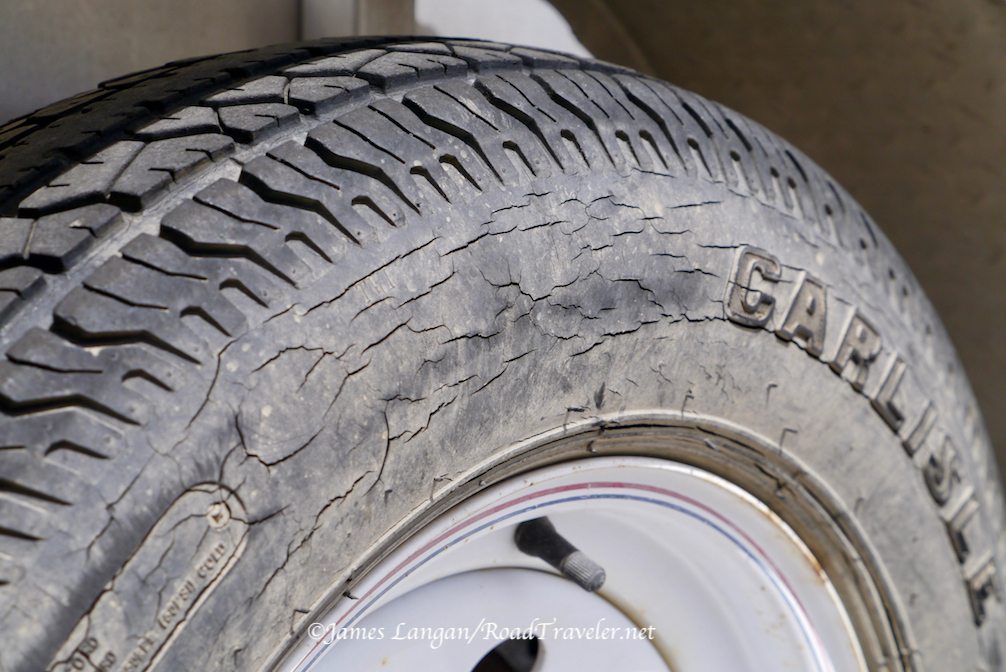
Needed RV Tires
Our vintage 1978 Avion travel trailer has served us well for the past 24 years and has consumed several sets of rubber. In addition to the miles traveled, bias-ply tires and the independent suspension have sometimes contributed to rapid wear. The Avion’s Adjust-A-Ride suspension helps the trailer ride and tow well, but there is limited adjustment available to insure perfect wheel alignment.
Like Ford’s Twin I-Beam and Twin Traction Beam (TTB) suspensions on older F-Series trucks, camber changes caused by varying loads and/or suspension cycling is less than ideal for wear. Many new trailers use radials; however, bias-ply tires are still around and often wear less evenly and much more quickly than radials.
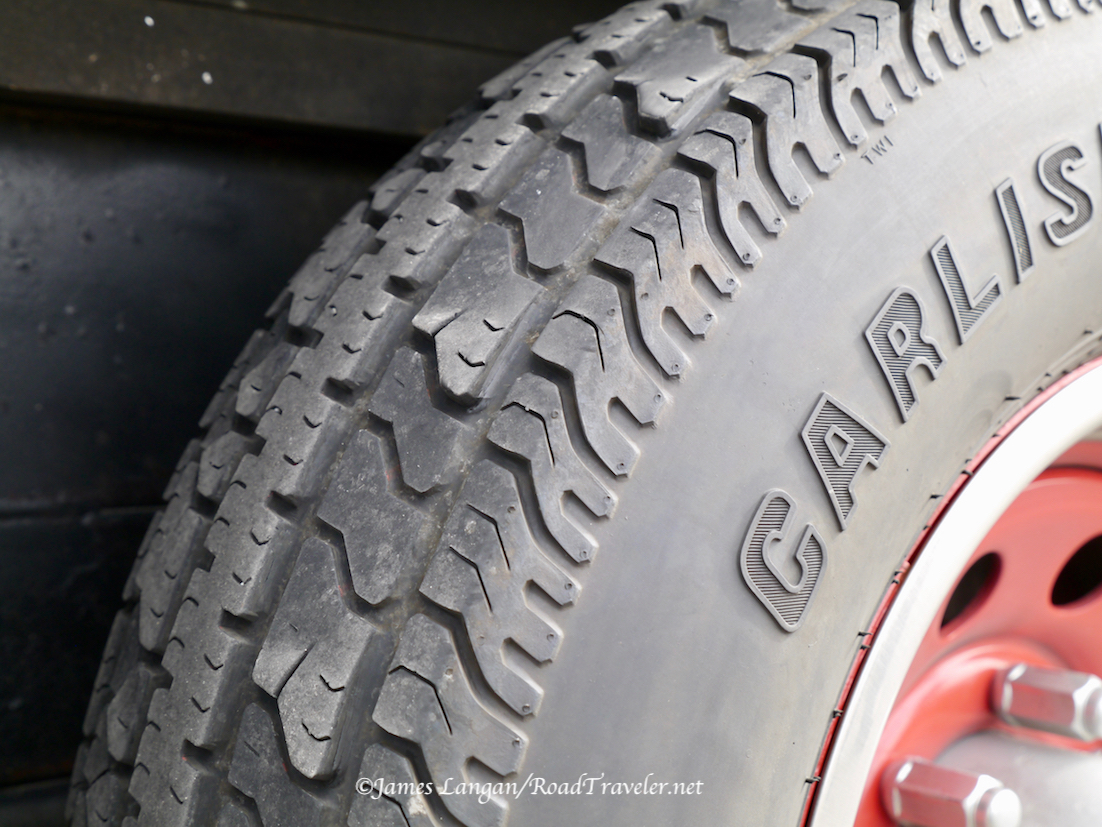
More recent sets have been radials, but cheap, offshore-made, and from a wrong-side-of-the-tracks store; often you get what you pay for. They worked, but I also didn’t drag the trailer beyond the state line for a few years, and I was less concerned about failures. I had an important trip planned to Idaho, Colorado, and back to Nevada to have my 2017 Ram’s (aka Oscar the Pack Mule) Hillsboro aluminum flatbed installed and to help design the new Hallmark flatbed camper, so I wanted to mount something better. That prompted the question, what are the best trailer tires for my application?
Special Trailer, P-metric, And Light Truck
Special Trailer (ST) tires are designed to be used on trailers, and they are not safe or legal for passenger vehicles. They are original equipment on many new trailers and are often the default choice for most at replacement time. P-metric, passenger car tires, are not specifically designed to be used on trailers, but they can be. However, their maximum load capacity must be reduced by nine-percent.
The speed rating for most ST rubber is 65 mph, though some now have higher ratings, and I purchased a set from Discount Tire a couple years ago that were capable of faster speeds. There are many states with higher speed limits without additional restrictions for trailers. Some drivers and tow-vehicles have no problem driving faster than 65 mph, but the treads need to be designed for that duty to be safe.
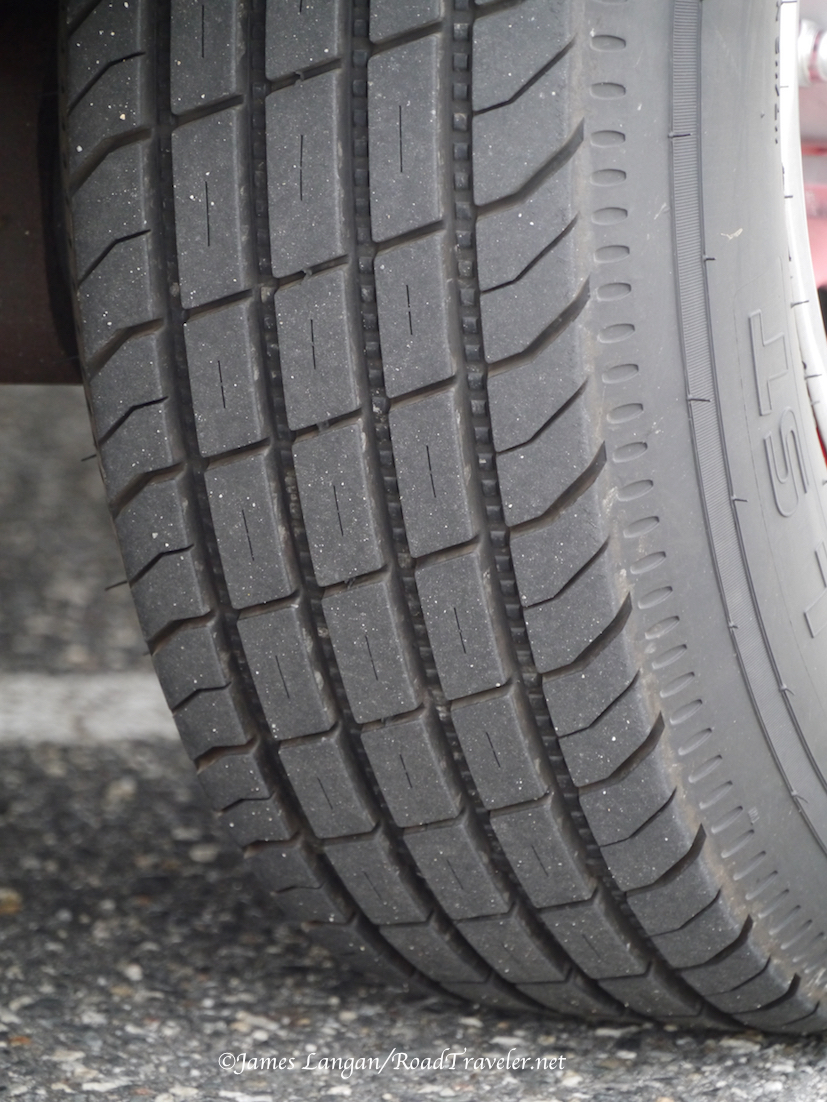
There is a sometimes-overlooked third option, Light Truck (LT) tires. Unlike P-metric sizes, LT tires can be loaded to their rated capacity for trailer applications. If you have any doubts about this, read it for yourself on a respected authority’s website: https://www.tirerack.com/tires/tiretech/techpage.jsp?techid=219
Considering LT tires not only expands the sizes that might fit a chassis, but light truck rubber can provide an additional benefit rarely seen on P-metric or ST equivalents: more tread depth. Just like it does on trucks, deeper tread helps us get more miles out of a set and can also disperse more water, snow, and other debris. Using LT tires on trailers is not revolutionary; there are a few manufacturers that put them on new units. Many RV owners unhappy with the limitations or poor quality of some ST tires have chosen to move to LT designs.
Some folks dutifully repeat hearsay that ST rubber is the only choice for trailers, primarily having P-metric in mind as the sole alternative. Instead of ST, maybe LT designs should be our go-to choice? I read a compelling argument by an RV tire expert who explained some of the ST tire shortcomings. He asked, “How is it that ST tires are rated to carry more weight than LT tires of the same size?” He explained that the loading formula for ST rubber is based on old alpha sizes, a maximum speed of 65 mph, and a shorter life expectancy. That explains a lot and doesn’t sound like a great compromise. Special Trailer tires are rated higher than comparable light truck versions partially because rapid wear (and possibly early failure) is acceptable. There are always opposing views, and I found another RV expert who acknowledged the checkered past and design limitations of ST rubber, but he still prefers them.
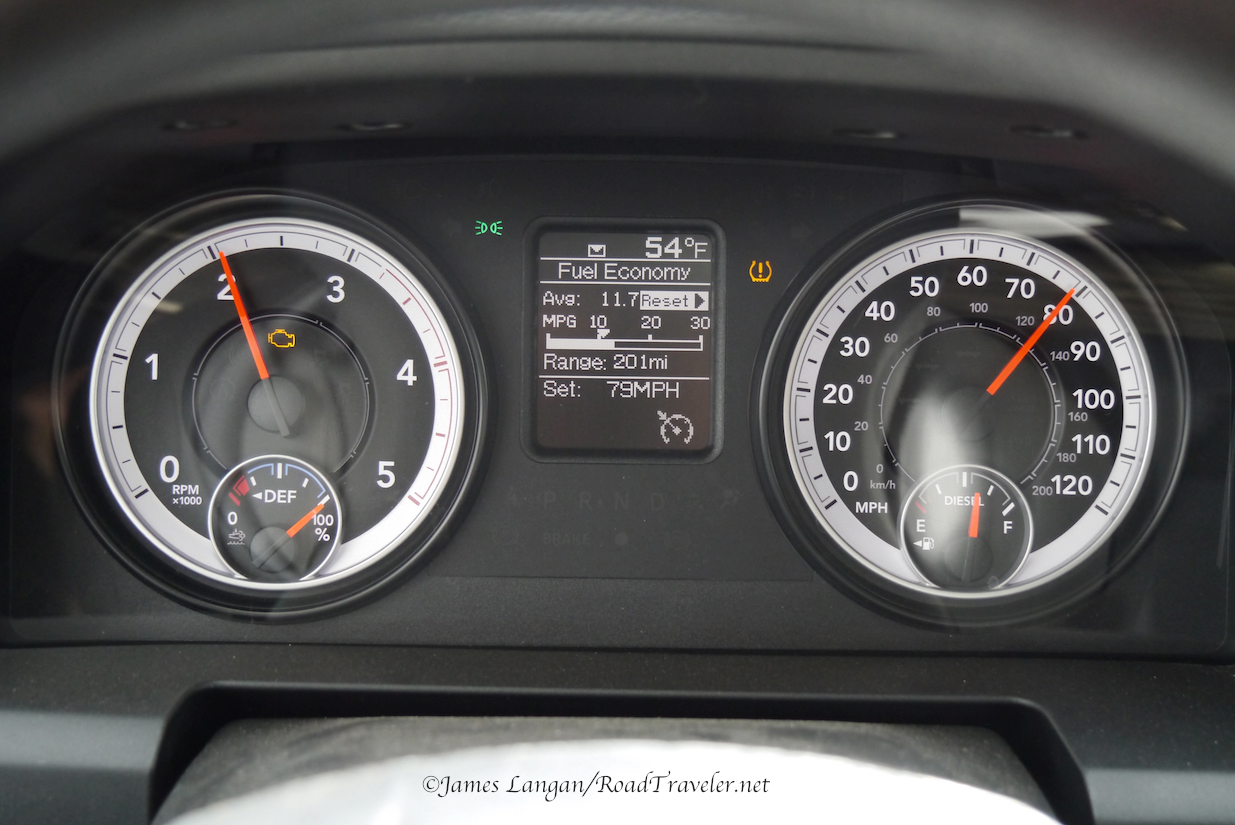
Outdated Size
The original size tires for our 40-year-old Avion trailer were 7.00-15 LT-D, which were about 29.5-inches tall. Note that this is an LT size, not an ST size, and could support 1,970-pounds each. (Modern ST versions of this exact size are rated for 2,040-pounds at 60 psi, about 70-pounds more per tire than the originals.)
Back in 1994 when we bought the Avion, the 7.00-15LT bias-ply size was still readily available. They can still be sourced but are rarely in-stock, and brand and tread choices are few. The common replacement is an ST225/75R15 radial, and a few sets of these have been run on the original Avion aluminum wheels, including load-range-C versions that had just enough load capacity.
The 225/75R15 is about one-inch shorter than the OE size, which effectively lowers the trailer about one-half inch. Some would consider a lower chassis beneficial, and generally it has been fine. However, this Avion was already pretty low, and when driving on dirt roads to deer-hunting base camps in Nevada’s Outback, lower has not been better. So I carefully researched sizes, specs, and measured the available clearance inside the Avion’s wheel wells, before jumping up to a bigger LT size.
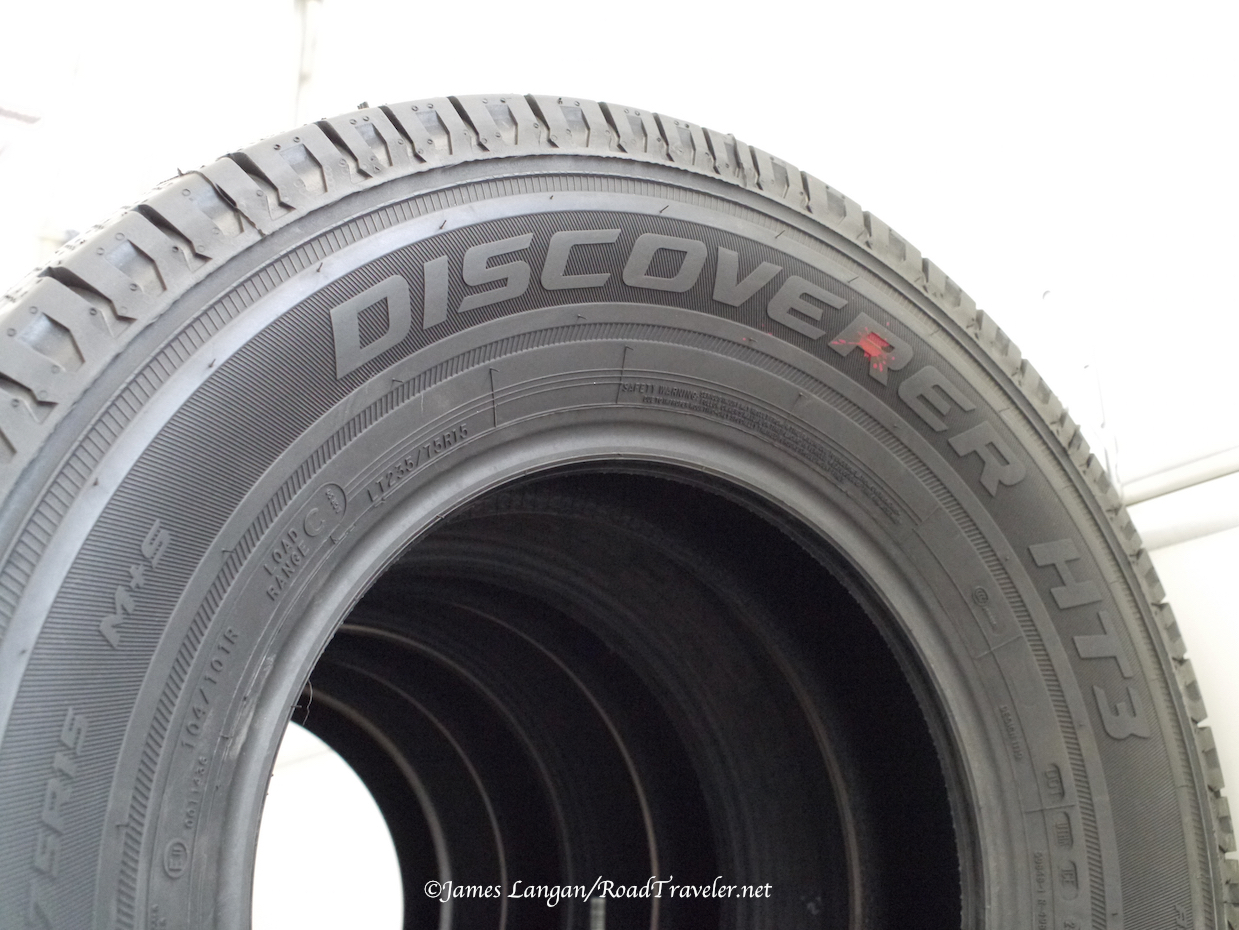
Cooper Discoverer HT3
The LT235/75R15 size is small by modern pickup standards, but they are still made and available from full-line manufacturers. The overall diameter is similar, though slightly wider and taller than the original 7.00-15LT. The exact dimensions of a tire in any given size will vary between manufacturers, and with the limited clearance on the trailer, I was concerned about possible rubbing. I measured carefully, studied the suspension and fender wells, and convinced myself that Cooper Tire’s LT235/75R15C probably would not rub ($130 each).
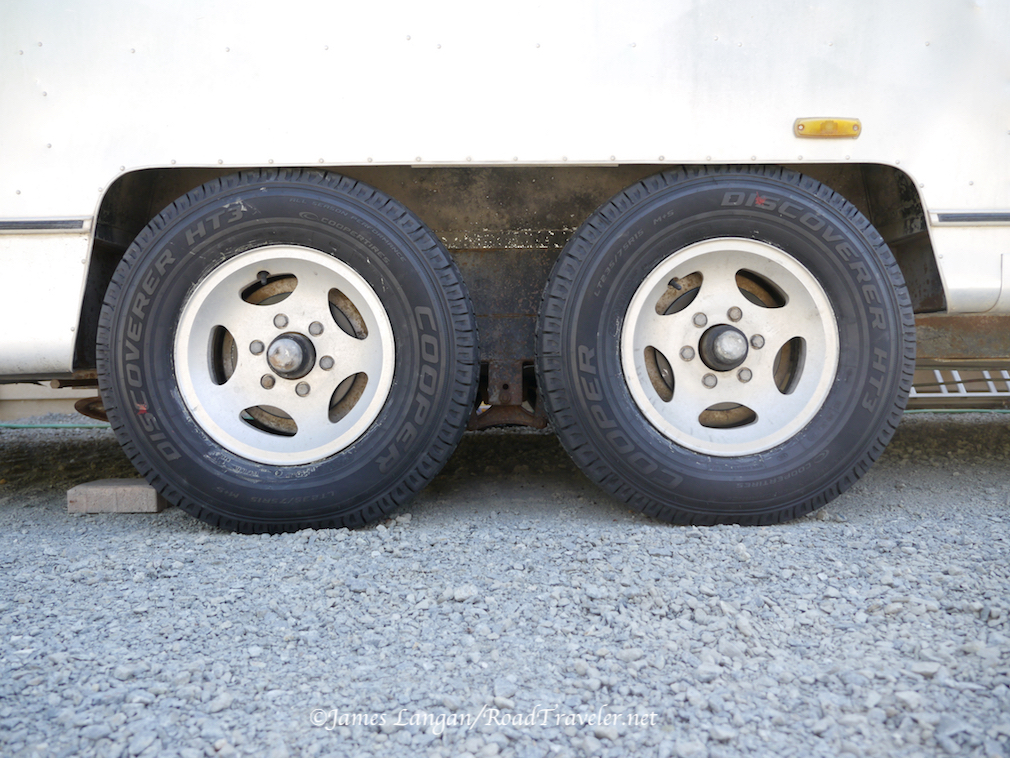
The original 7.00-15 were load-range-D, and most 235/75R15LT are load-range-C. However, as I detailed in another tire article, it is time to starting using a tire’s load index and the actual capacity, instead of load range or ply rating. What does the sidewall say? The load-range-D, 7.00-15LT treads were rated for 1,970-pounds at 60 psi. These load-range-C Cooper Discoverers in LT235/75R15 have a capacity of 1,985-pounds at 50 psi. Tread depth is a whopping 14/32”, not quite double the 8/32” on a typical ST. It should be easy to get thousands more miles out of these Coopers. Pay a little more to get more performance, wear, and safety? You bet!
The HT3s were mounted on the OE aluminum wheels, static/single plane balanced, and test fit to the Avion. The Cooper Discoverers appeared to have adequate clearance, but I went to a nearby high school parking lot after hours to articulate the axles on some large, teenager-inspired speed bumps, while inspecting for possible rubbing. With an HT3 stuffed into the fender well, clearance between the outer shoulder and the inner fender was tight, about 1/2″, but they did clear.
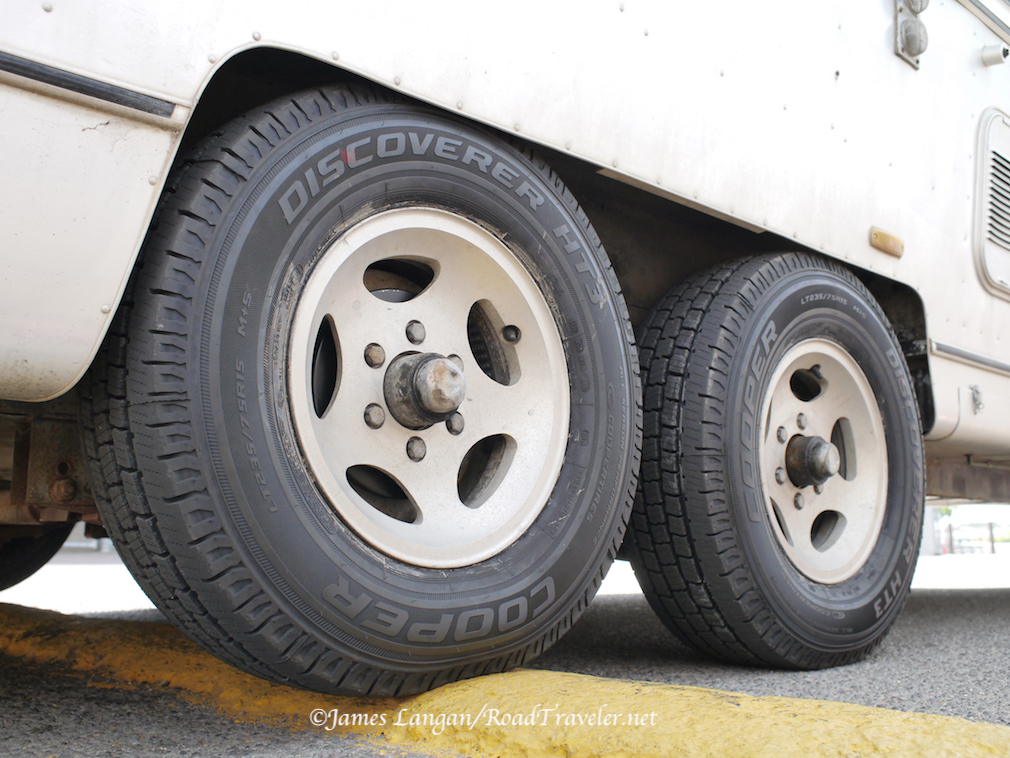
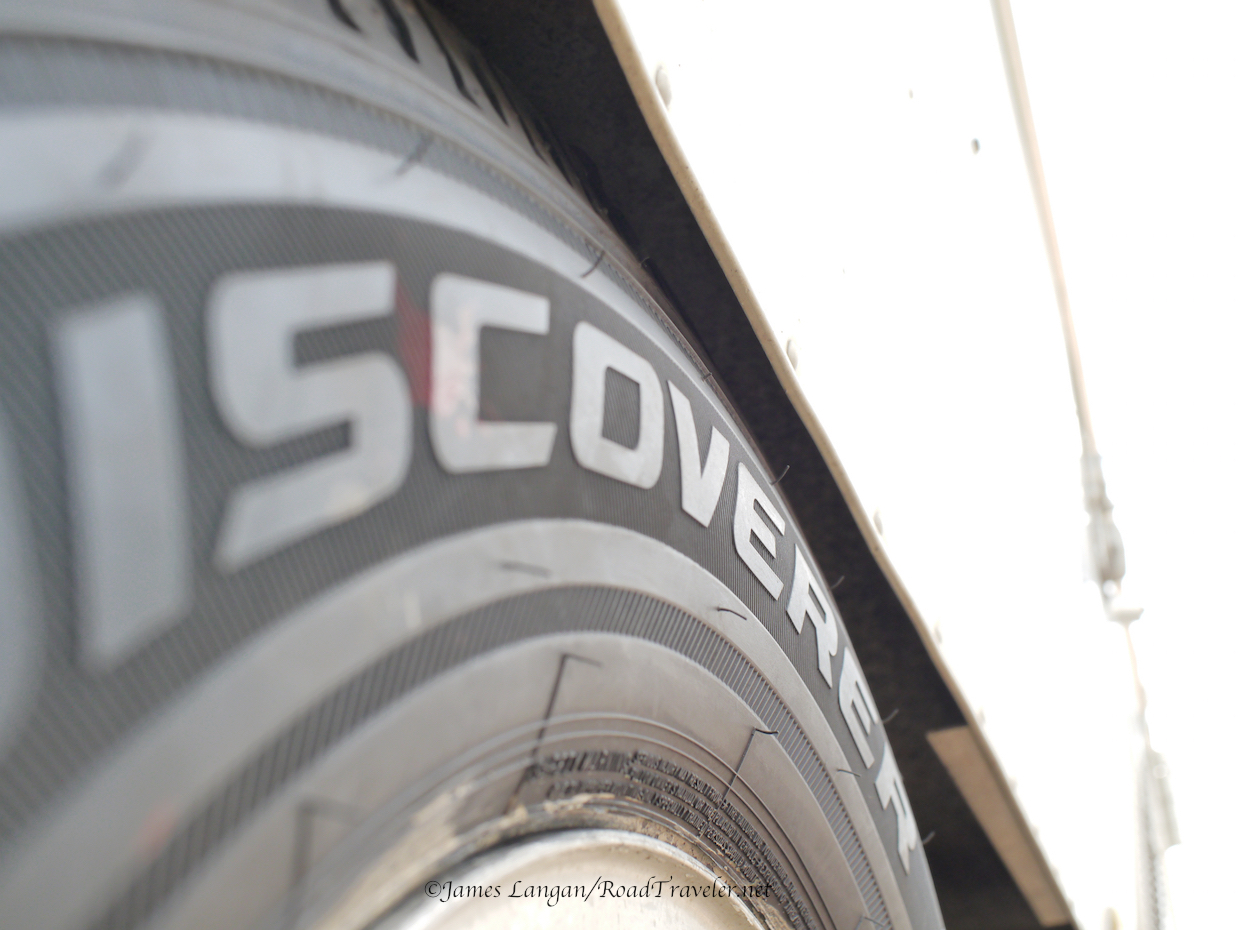
2,200 Mile Road Test
The real test was heading out across the Western United States, over fast rural highways and freeways. Leaving Western Nevada, I drove almost 500 miles to have the Pack Mule’s flatbed installed in Idaho, then another 700 miles to Fort Lupton, Colorado, to Hallmark Campers. The most direct route home was an additional 1,000 miles.
The Avion dutifully followed behind the regular cab flawlessly, at any legal speed, which is 80 mph on some sections of rural Interstate 80 in Wyoming, Utah, and Nevada. These HT3 have an N-speed-rating, 106 mph, of course that’s a bit fast, and most towing was between 65 and 75 mph.
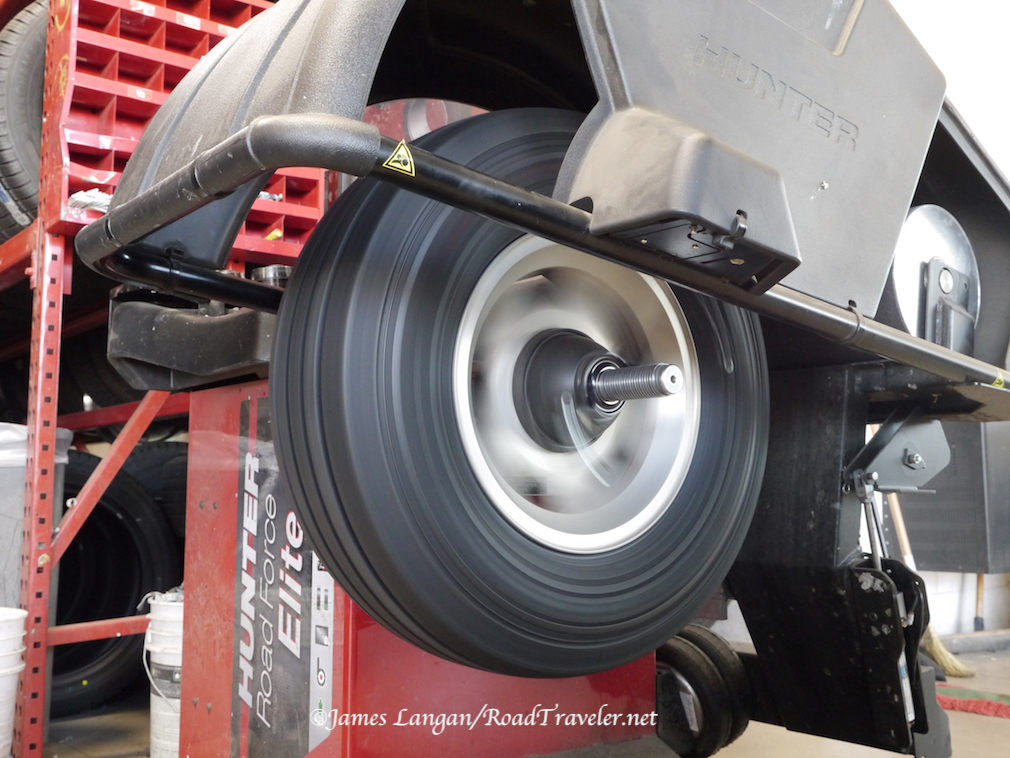
The Discoverers never felt hot to the touch, barely warm, and did not appear to wear during the trip, as they still measured a full 14/32″ upon returning home. This contrasts with the short life I’ve experienced from bias-ply tries on the same chassis, which sometimes have been consumed after just a few thousand miles. I am extremely happy that I chose the Cooper Discoverer HT3 specifically, and a high-quality LT tire in general.
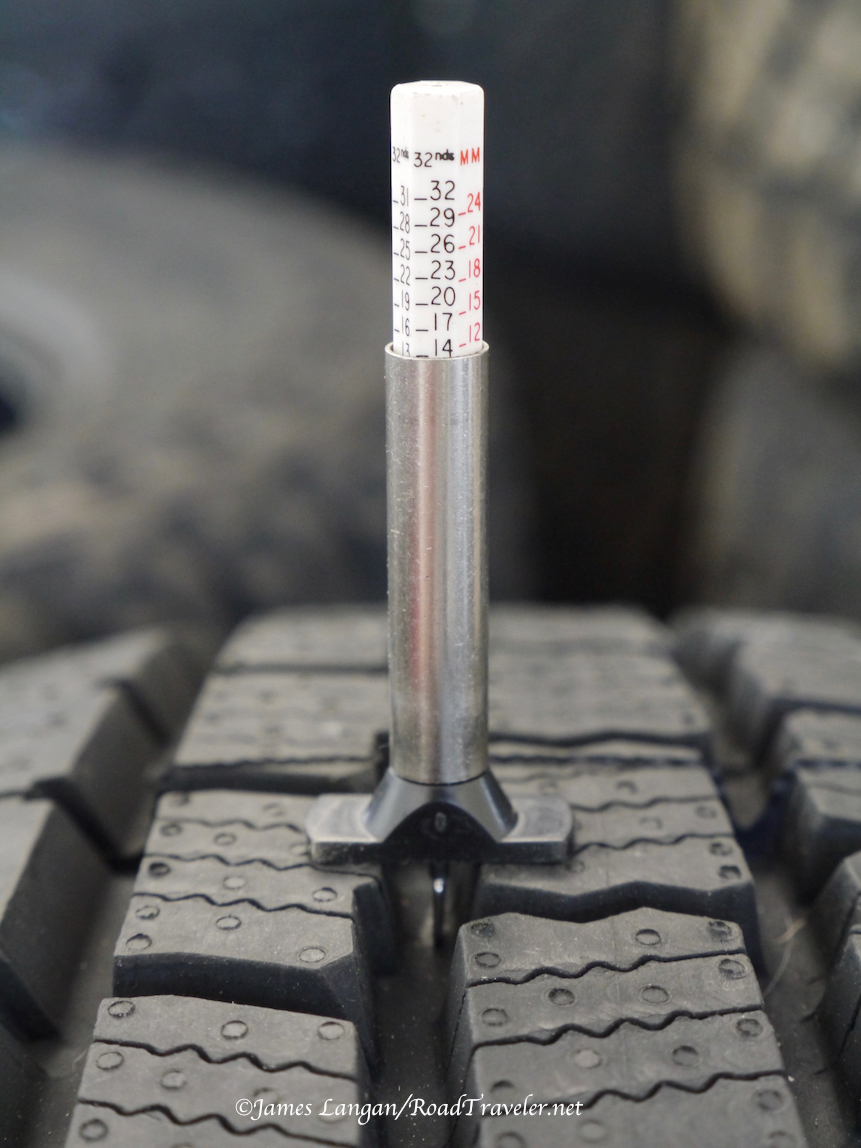
Tell ‘em you saw it on RoadTraveler.net.
James Langan
Copyright James Langan/RoadTraveler. All Rights Reserved
Resources:
Cooper Tires
800-854-6288
Hallmark Campers
877-659-5753
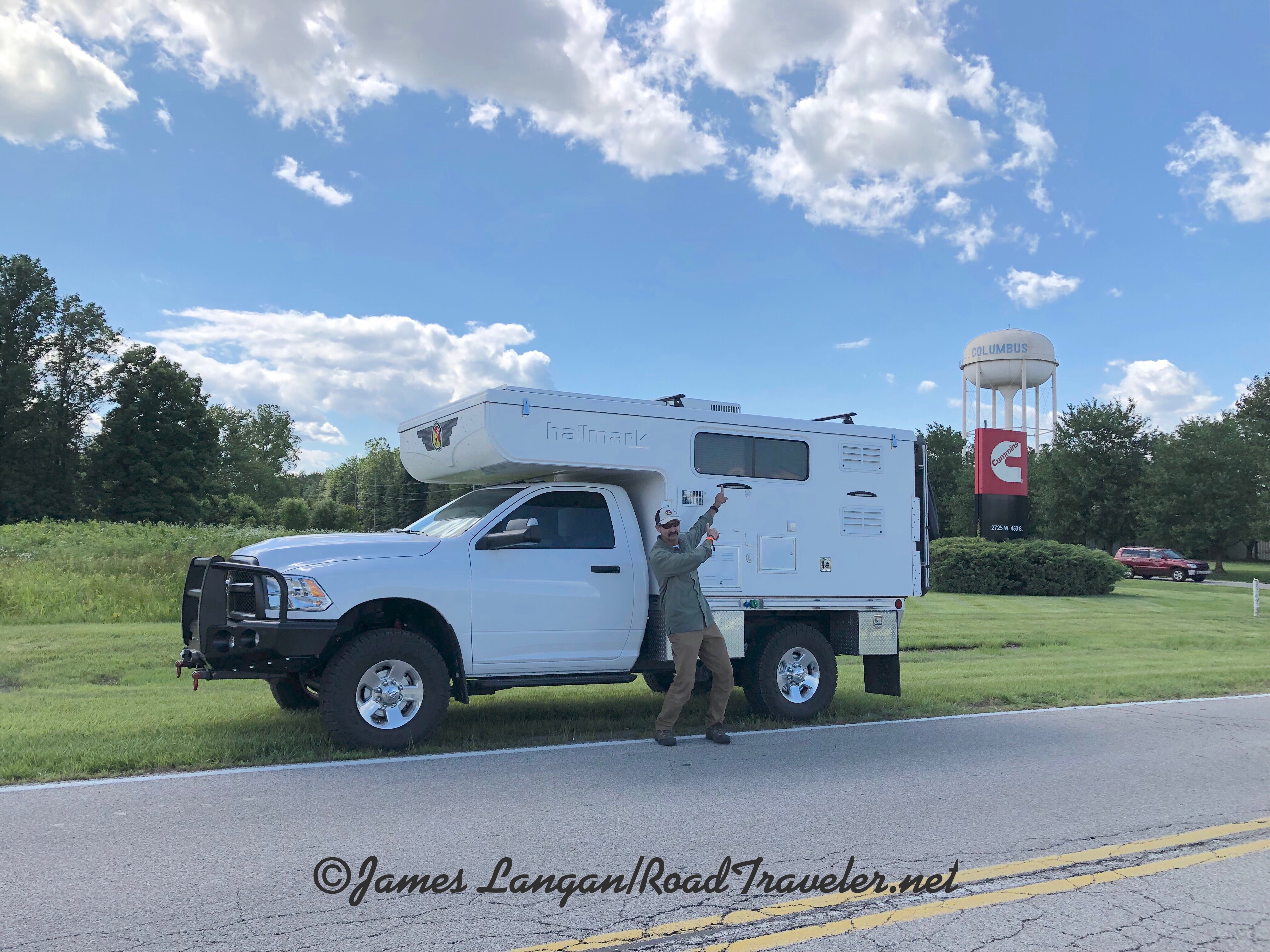
I was in Columbus, Indiana, for the 100th anniversary of the Cummins Engine Company, and the Turbo Diesel Register Rallly.
It will take me a while to sort through all the content I created, but I’m sharing some iphone snaps here and on Instagram. (Heck, I still have material from Overland Expo West I have not finished sharing.)
Tell ‘em you saw it on RoadTraveler.net.
James Langan
Copyright James Langan/RoadTraveler. All Rights Reserved
Tell ‘em you saw it on RoadTraveler.net.
James Langan
Copyright James Langan/RoadTraveler. All Rights Reserved
Resource: